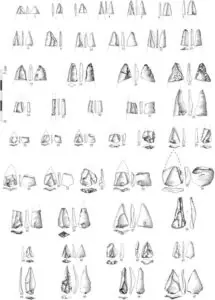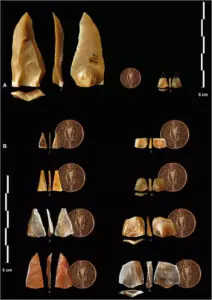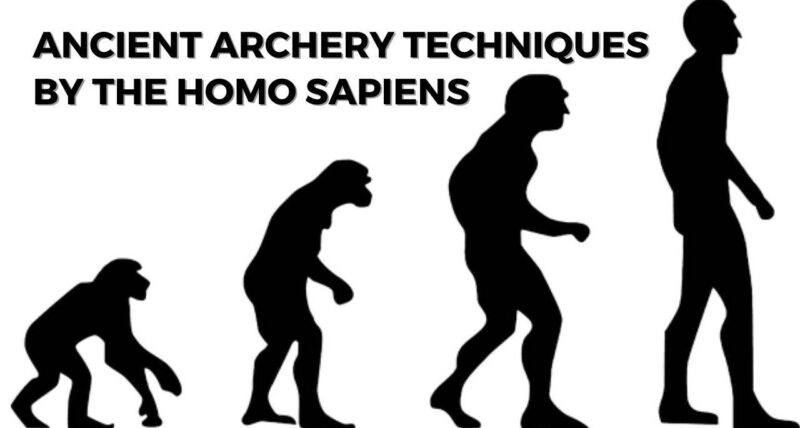Off late, historians found the use of spear thrower or the bow and arrow combinations to appear abruptly out of proper context in Eurasian history. These ancient archery techniques remained invisible in the Middle Paleolithic time. And with the arrival of the first modern humans, the onset of the Upper Paleolithic age became prominent.
As per the records, the weapons of the middle paleolithic time were technically based on hand-cast spears. Conversely, the ones used during the Upper Paleolithic age had microlithic technologies backing them up. The latter ones had undergone stern differentiation on a technical level. And scientists of the present date have come up with a dedicated study. With findings from Eurasia, “Layer E of Grotte Mandrin 54 ka ago in Mediterranean France.” The results not only come as a crucial part of the history but also, does shed enough light on the background of the population from such age.
Key Takeaways
- The study focuses on ancient modern humans’ background during their first invasion phase in Europe 54,000 years back.
- The space of discovery stands as Eurasia (Grotte Mandrin’s Layer E within Meditteranean France).
- The weapons come with a precise cut and size, representing quite a difference compared to the techniques used by the Neanderthals.
- Also, historians believe it might have been easy for modern humans to continue ruling local Neanderthals with such planned weapons.
- The mechanically projected forms of these weapons did help historians to come up with a thorough distinction between the ones found in the Middle Paleolithic times from the Upper Paleolithic ones.
- In the process, scientists went forward with a naked-eye observation of the weapons. Then there was an evaluation under the macroscope, and finally, an analysis with a microscope did help.
Background of the study: ancient archery techniques
The place of discovery, i.e., Grotte Mandrin, does contain important information about various Neanderthal phases currently known to the human population. It is an appropriate rock shelter vaulted by nature and directly overlooks the rhone river’s middle valley. Each layer in the same does comprise numerous paleontological remains. And precisely, the E layer comprised 2267 elements (lithic), attributing towards the production of Levallois points. These points are standardized as well.

The findings include bladelets, blades, and other points representing 75.1% of all blanks. And after thorough observation, the researchers did conclude:
- That the production process was technically highly controlled.
- Also, the makers focused on the larger points, between 30 mm to 60 mm, and microlithic points below 30 mm. At times, there were points sized 10 mm, regarded as the nano points.
Modern humans, during ancient times, knew how to make technological differentiations and not distinguish on the basis of size. Moreover, they did initiate the production of larger blades based on laminar technology.
Relevant discussions on the ancient archery techniques by the first modern humans
The Rhone valley is an essential corridor between the steppes of Northern Europe and the Mediterranean basin. Thus paving the way for modern humans, the first of their kind to invade the territories of the Neanderthals. And because the former was acquainted with archery, they won.

The most interesting part is these highly technical skills were not known by the Neanderthals or anyone else near and around Eurasia. Also, the trend of the human population invading others’ land and expanding the area of the rule does gain adequate prominence.
Also, a general fact about social conventions has been concluded based on the comparisons and other archeological studies relevant to the places near and about. They came up with the point that even though bow and arrow technology was quite an upgrade in the weaponry art of ancient times. The locals surrounding the modern humans of that age constrained themselves from accepting the same.
Materials and methods included in the discovery of ancient archery techniques
Archaeologists found it well preserved on their excavation spree to the Mandarin E collection. Environmental features like the rapid deposition of sand and the pre-existing dry environment caused no further displacement. The findings only did undergo chemical alterations with effects of “white patina” and “gloss.” Moving forward, the researchers did take the path of systematic use of wear analysis over the microscope. But that did not alter the natural usage cause of the weapons.
Also, the team did conduct a naked-eye analysis, following which there were macro future examinations and well-panned analysis under the microscope. The method of study makes a differentiation between the “pressure motions” and the “percussion motions.” Further, in the study, one can observe the macrofracture method in the simplified version.
Final discussion
Scientists did find 852 stone artifacts from the place of origin among the sediment layer of Grotte Mandrin. Out of them, 196 stones in triangular shapes did offer heavy damage. While the other 15 stone points did show alterations by butchery activities, which include cutting.
An archaeologist from Johannesburg University does suspect that the first of modern man or the Homo Sapien did use bows & arrows as well as spears to hunt. The Neanderthals did indeed come in contact with the modern hunting techniques of the same. But prior brain scans do focus on the fact that the Neanderthals were not that evolved to understand and apply the techniques in their own life. They were still entrapped in their habits of the stone age and never could get out of the same.



